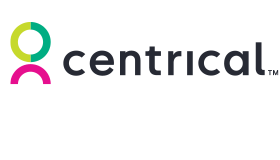Discover expert insights, proven methodologies, and cutting-edge technologies to elevate customer satisfaction & drive operational efficiency.
Contact centres are key for businesses to interface with their most important stakeholders – their customers. It follows that operational leaders will want to do everything they can to ensure that the contact centre provides a consistent, valuable, on-brand experience – and this is where contact centre quality assurance comes in.
In this 2023 Comprehensive Guide to Contact Centre Quality Assurance, we’ll examine every facet of optimizing contact centre quality assurance and discuss how to address common pain points.
What Is Contact Centre Quality Assurance?
Let’s start with the basics by defining contact centre quality assurance. Simply put, contact centre quality assurance refers to the process of monitoring and assessing the quality of interactions between contact centre agents and customers.
It involves evaluating various aspects of customer interactions – such as agent performance, adherence to scripts and guidelines, call-handling techniques, customer satisfaction – and the overall quality of service delivery.
The main objective of contact centre quality assurance is to ensure that customer interactions meet or exceed the expected standards of quality, efficiency, and effectiveness as set by company leadership.
By implementing quality assurance practices and optimizing the data captured around interactions, contact centres can identify areas of improvement, enhance agent training programs, and ultimately provide better customer service experiences.
Benefits of Contact Centre Quality Assurance
There are numerous benefits when it comes to improving contact centre quality assurance. Some are obvious, and some less so. These benefits include:
Improved Customer Satisfaction
Quality assurance helps in identifying and addressing issues that may negatively impact customer satisfaction.
By consistently monitoring and evaluating interactions, contact centres can target areas for improvement and implement corrective actions, leading to enhanced customer experiences and increased satisfaction.
Enhanced Agent Performance Experience
Evaluating performance provides feedback, coaching, and training opportunities for agents.
Consistent Service Delivery
Quality assurance processes ensure that agents adhere to established guidelines, scripts, and quality standards consistently.
Compliance and Risk Mitigation
Contact centres often need to adhere to regulatory requirements and industry standards. Quality assurance helps with maintaining compliance by monitoring and evaluating interactions for adherence to legal and regulatory guidelines.
Process Optimization
Quality assurance data and analysis provide valuable insights into contact centre operations. By identifying trends, patterns, and areas for improvement, contact centres can optimize their processes, streamline workflows, and allocate resources effectively.
Increased First Contact Resolution – and Other KPI Improvements
By evaluating the effectiveness of problem-solving skills and call-handling techniques, leaders can identify areas where agents can improve their ability to resolve customer issues during the initial contact.
For example, contact centres can reduce the need for customers to make multiple contacts for the same problem, leading to higher first contact resolution rates.
Sustainable Competitive Advantage and Customer Retention
Contact centres that prioritize quality assurance and consistently deliver high-quality customer service gain a competitive edge.
Positive customer experiences and satisfaction lead to customer loyalty, positive word-of-mouth referrals, and repeat business, positioning the contact centre as a preferred choice among customers.
How Is Call Quality Assessed?
It’s one thing to push for higher standards when it comes to contact centre quality assurance, but if these are not measured correctly or consistently, it can be extremely challenging to drive effective change.
Assessing call quality is therefore a key element of contact centre quality assurance. Popular ways in which to assess call quality include:
Adherence to Quality Standards
Managers can evaluate calls based on predefined quality standards. These standards may include factors such as professionalism, courtesy, empathy, active listening, compliance with scripts and guidelines, accuracy of information provided, and adherence to call-handling procedures.
Communication and Problem-Solving Skills
Managers or supervisors will check how effectively the agent communicates with the customer, including factors such as clarity, tone of voice, grammar, and overall language proficiency.
Customer Satisfaction and Resolution
The satisfaction of the customer is a crucial aspect of call quality assessment. Assessors, including managers and supervisors, may utilize various methods to gather feedback on customer satisfaction, such as post-call surveys, customer feedback forms, or customer satisfaction scores.
Key Components of Contact Centre Quality Assurance
There are several components to contact centre quality assurance. The specifics will differ from organization to organization, but in general, these components will consist of:
Call Monitoring
Either managers or technology solutions monitor or review recorded customer interactions, such as phone calls, chat transcripts, or emails, to assess the agent’s performance and adherence to predefined quality requirements.
Evaluation Criteria
Contact centres establish evaluation criteria and metrics based on their specific goals and customer service standards.
Performance Evaluation
Agents are assessed based on the established criteria, and their performance is measured against key performance indicators (KPIs). KPIs will differ between organizations, but there are some common contact centre KPIs.
Coaching and Training
Managers provide feedback and coaching to agents based on evaluation results. They identify areas that require improvement and suggest strategies to enhance agent performance, customer service skills, and overall customer satisfaction.
Training/L&D teams also use contact centre quality assurance data to identify additional learning opportunities.
Calibration
This is an important part of the contact centre quality assurance process and improves the quality of customer interactions by ensuring that agents are evaluated and scored consistently and fairly, and customers are receiving a consistent, high-quality level of service.
Reporting and Analysis
Quality assurance teams generate reports and analyze data to identify trends, patterns, and areas of improvement within the contact centre.
Continuous Improvement
Contact centre quality assurance is an ongoing process aimed at continuous improvement. By using feedback, coaching, training, and data analysis, contact centres can implement corrective actions, optimize processes, and refine their customer service strategies over time.
5 Methods of Contact Centre Quality Assurance
We’ve looked at how contact centre quality assurance is assessed, and its key components. But what are best practices when it comes to the actual methods of contact centre quality assurance?
1. Call Monitoring
Either humans or technological tools are being used to listen in and evaluate calls, either in real-time or after the call.
2. Quality Scorecards
These are predefined quality evaluation forms or checklists used to assess the quality of customer interactions.
3. Customer Surveys
Customer surveys are conducted to gather feedback directly from customers regarding their experience with the contact centre. Surveys may be administered after the interaction, through email, or via automated IVR (Interactive Voice Response) systems.
4. Speech Analytics
This method involves using automated tools to analyze recorded customer interactions.
5. Peer Reviews
Peer reviews involve having experienced agents or quality assurance specialists assess and evaluate the performance of their colleagues.
Implementing Contact Centre Quality Assurance
Implementing contact centre quality assurance involves establishing a structured framework to monitor, evaluate, and improve the quality of customer interactions.
It begins by defining clear quality standards, criteria, and key performance indicators (KPIs) aligned with organizational goals.
It then includes measuring progress against these KPIs and making changes where necessary.
Regular feedback, coaching, and training sessions should be provided to agents based on evaluation results. Continuous analysis of data and feedback helps identify areas for improvement, optimize processes, and drive overall excellence in customer service.
The commitment to ongoing quality improvement ensures that the contact centre consistently delivers exceptional customer experiences.
10 Contact Centre Quality Assurance Best Practices You Need to Follow
We’ve put together ten of the best practices that should be followed when it comes to contact centre quality assurance:
- Clearly define quality standards and performance expectations for agents.
- Implement a gamification-based contact centre quality assurance solution to drive employee engagement and customer satisfaction.
- Establish regular monitoring and evaluation processes to assess agent performance.
- Provide timely and constructive feedback to agents based on evaluation results.
- Offer ongoing coaching and training opportunities to enhance agent skills and knowledge.
- Utilize customer surveys and feedback to gauge customer satisfaction and identify areas for improvement.
- Leverage speech analytics tools to analyze recorded interactions and uncover insights.
- Foster a culture of continuous improvement and innovation within the contact centre.
- Regularly review and update quality standards and evaluation criteria to stay aligned with customer needs and industry trends.
- Encourage collaboration and knowledge sharing among agents through peer reviews and team feedback sessions.
How to Measure Contact Centre Quality Assurance
When it comes to measuring contact centre quality assurance, again there are some common themes that most organizations choose to follow.
Quality Metrics
Quality metrics provide quantitative measurements of contact centre performance. These metrics can include such things as first contact resolution (FCR) rate, customer satisfaction scores (CSAT or NPS), call abandonment rate, and adherence to scripts/guidelines.
These metrics provide insights into efficiency, customer satisfaction, and compliance, allowing contact centres to track performance over time and identify areas for improvement.
Evaluation Scores
Evaluation scores assess agent performance using quality scorecards or evaluation forms. These scores typically measure how well agents meet predefined criteria and quality standards.
Scores can be assigned on a scale, such as numerical ratings or percentages, to provide a quantifiable measure of agent performance.
Customer Feedback
Customer feedback is a crucial component of measuring contact centre quality. This can be collected through post-interaction surveys, customer feedback forms, or social media listening.
Customer satisfaction scores, Net Promoter Scores (NPS), and customer comments provide valuable insights into the quality of customer interactions and overall satisfaction levels.
Tools for Contact Centre Quality Assurance
Commonly used tools for contact centre quality assurance include:
Gamification-Based Performance Management Platform
The Performance eXperience Platform integrates quality into the agent performance experience. It supports the complete quality evaluation process and makes it actionable through connected and gamified quality KPIs, learning and coaching – which keeps agents engaged and drives ongoing performance improvement.
Call Recording and Analytics Systems
These systems enable contact centres to capture and store customer interactions, such as phone calls or chat transcripts. They offer features like speech analytics, sentiment analysis, and keyword spotting to gain insights from recorded interactions.
Customer Survey and Feedback Tools
Customer survey and feedback tools facilitate the collection and analysis of customer feedback. These tools enable contact centres to design and distribute surveys, capture customer responses, and generate reports on customer satisfaction metrics.
Workforce Management Software
Workforce management software assists in optimizing staffing levels, scheduling, and forecasting in the contact centre. Such software helps align agent availability with customer demand, ensuring adequate coverage for handling customer interactions.
Challenges of Contact Centre Quality Assurance
Of course, as with any aspect of business there are specific challenges to overcome with it comes to contact centre quality assurance. Three of these main challenges are:
1. Ensuring Consistency
Contact centres often have a large number of agents handling customer interactions, making it challenging to ensure consistent quality across all interactions.
Maintaining consistent adherence to quality standards, scripts, and guidelines can be difficult, especially when dealing with a diverse, distributed workforce, differing agent tenure and history, or when agents handle different types of inquiries.
Contact centres must establish robust training programs, provide ongoing coaching, and implement effective quality monitoring processes to address this challenge.
We also recommend reconsidering the one-evaluation-form-fits-all approach, allowing flexibility so that agents are evaluated according to their tenure, function, history, etc., giving a more accurate picture of performance. This is also important in BPOs where quality standards differ by campaign/account.
2. Scalability
As contact centres grow or experience fluctuations in call volume, maintaining quality assurance practices becomes more challenging. Scaling quality assurance processes, such as call monitoring and evaluation, can be resource-intensive and time-consuming.
It requires implementing appropriate technology solutions, optimizing workflows, and ensuring adequate staffing and training to accommodate increased demand while still delivering consistent and high-quality service.
3. Subjectivity and Bias
Assessing quality in customer interactions involves subjective judgment, which can introduce biases or inconsistencies in evaluations.
Different evaluators may have varying interpretations of quality criteria, leading to inconsistent scoring and feedback.
It is essential to establish clear and objective evaluation criteria, provide training to evaluators, and implement calibration sessions to ensure consistency and minimize bias in quality assessments.
Summary and Key Takeaways
In this guide, we looked at everything you need to know to create a world-class, leading contact centre quality assurance program. A few key takeaways:
Quality assurance programs are critical for call centres to ensure the consistency and quality of customer interactions.
Some of the recommended best practices for call centre quality assurance include clearly defining quality standards and expectations, regular monitoring and evaluation processes, and fostering a culture of continuous improvement.
Evaluation criteria can include quality metrics, evaluation scores, and customer feedback.
Tools for contact centre quality assurance include quality management software, customer feedback tools such as surveys), and call recording and analytics systems.
A platform helps organizations elevate the agent performance experience to deliver world class customer experience by optimizing call centre quality assurance processes through dynamic quality evaluation forms and connected and gamified performance management, coaching, and learning.
You’ll inspire agents with quality KPIs, improve consistency, empower managers and supervisors with real-time insights, and personalize coaching at scale.
Call Centre Quality Assurance FAQs
Why Is QA Important in Call Centres?
QA is critical in call centres because it ensures a consistent and satisfying experience for customers, as well as a transparent and objective guide for call centre agents to measure themselves against and improve.
What Is KPI in Quality Assurance?
KPI in quality assurance refers to Key Performance Indicators that measure the performance and effectiveness of quality assurance efforts. These indicators provide measurable benchmarks to assess agent performance, customer satisfaction, and overall call centre quality.
How Is Quality Assurance Measured in a Call Centre?
Quality assurance in a call centre is measured through various methods such as evaluating call recordings, analyzing customer feedback and satisfaction scores, monitoring adherence to quality standards, and tracking key metrics like first contact resolution rate, and customer sentiment.
How Can I Improve My Call Centre Performance?
To improve call centre performance, focus on agent training and development programs, regularly monitor and evaluate performance using quality assurance practices, gather and analyze customer feedback, streamline processes, and leverage technology solutions to enhance efficiency and customer experience.
How Can I Improve My Call Centre’s Call Monitoring?
To improve call monitoring, establish clear evaluation criteria and standards, provide comprehensive training to evaluators, implement calibration sessions for consistency, leverage call recording and analytics tools, and provide timely and constructive feedback to agents based on evaluation results to drive performance improvement.
This blog post has been re-published by kind permission of Centrical – View the Original Article
For more information about Centrical - visit the Centrical Website
Call Centre Helper is not responsible for the content of these guest blog posts. The opinions expressed in this article are those of the author, and do not necessarily reflect those of Call Centre Helper.
Author: Centrical
Published On: 24th Jul 2023 - Last modified: 26th Feb 2025
Read more about - Guest Blogs, Centrical, Quality






 Centrical provides a real-time performance management, microlearning, gamification, coaching, and voice of the employee platform for frontline teams. The solution inspires and personally guides employee success and growth by making every moment actionable.
Centrical provides a real-time performance management, microlearning, gamification, coaching, and voice of the employee platform for frontline teams. The solution inspires and personally guides employee success and growth by making every moment actionable. 




























